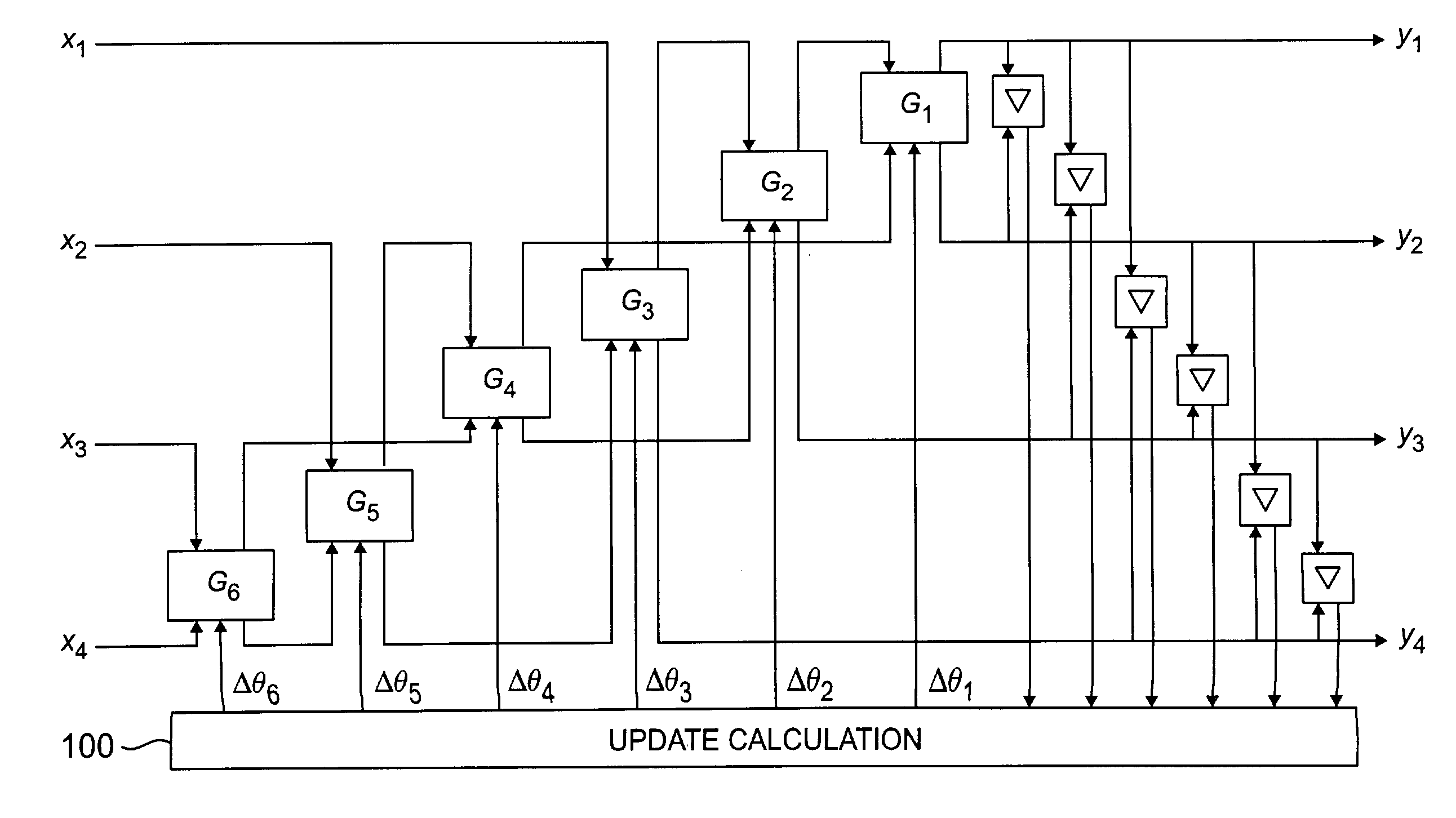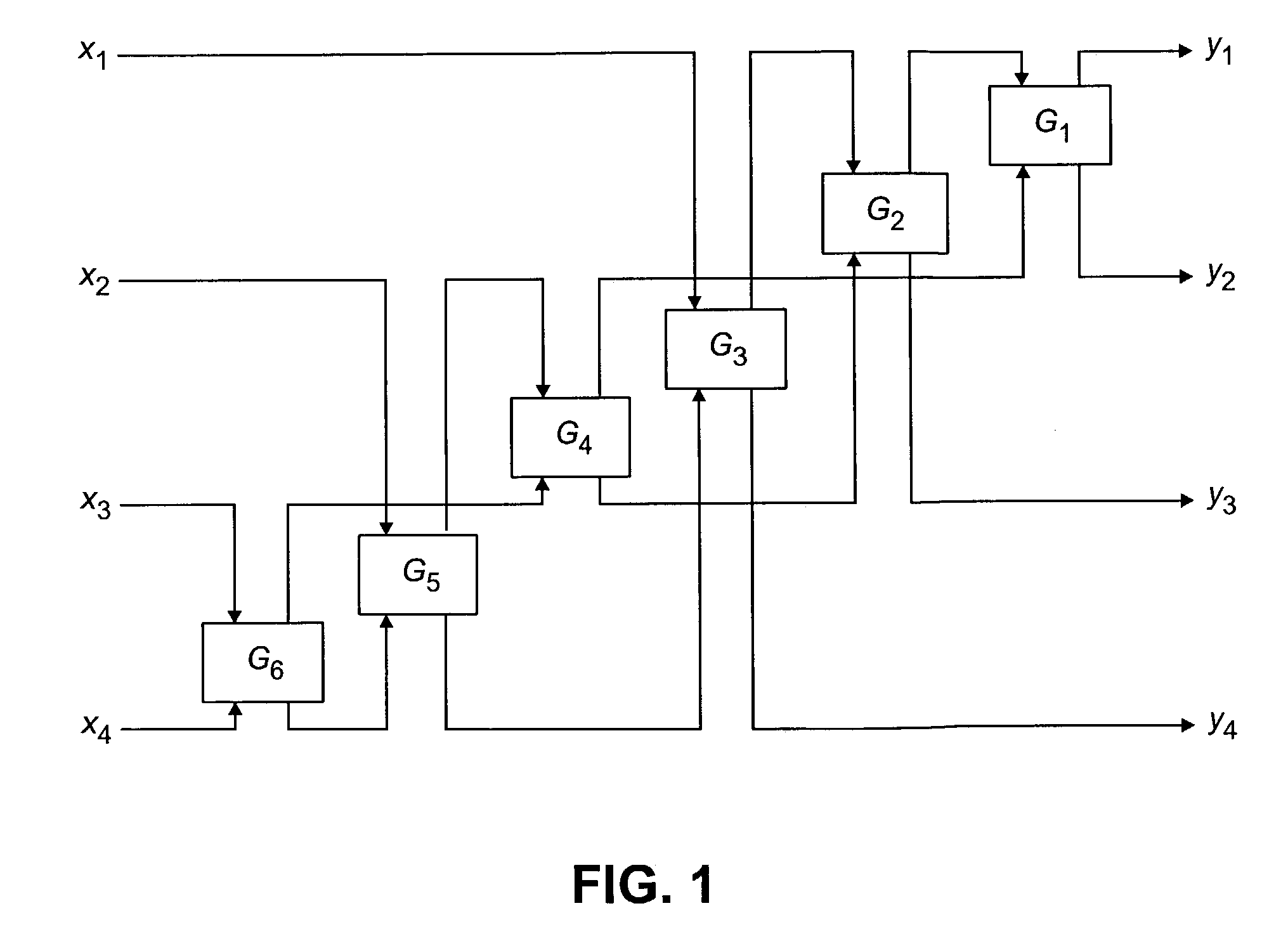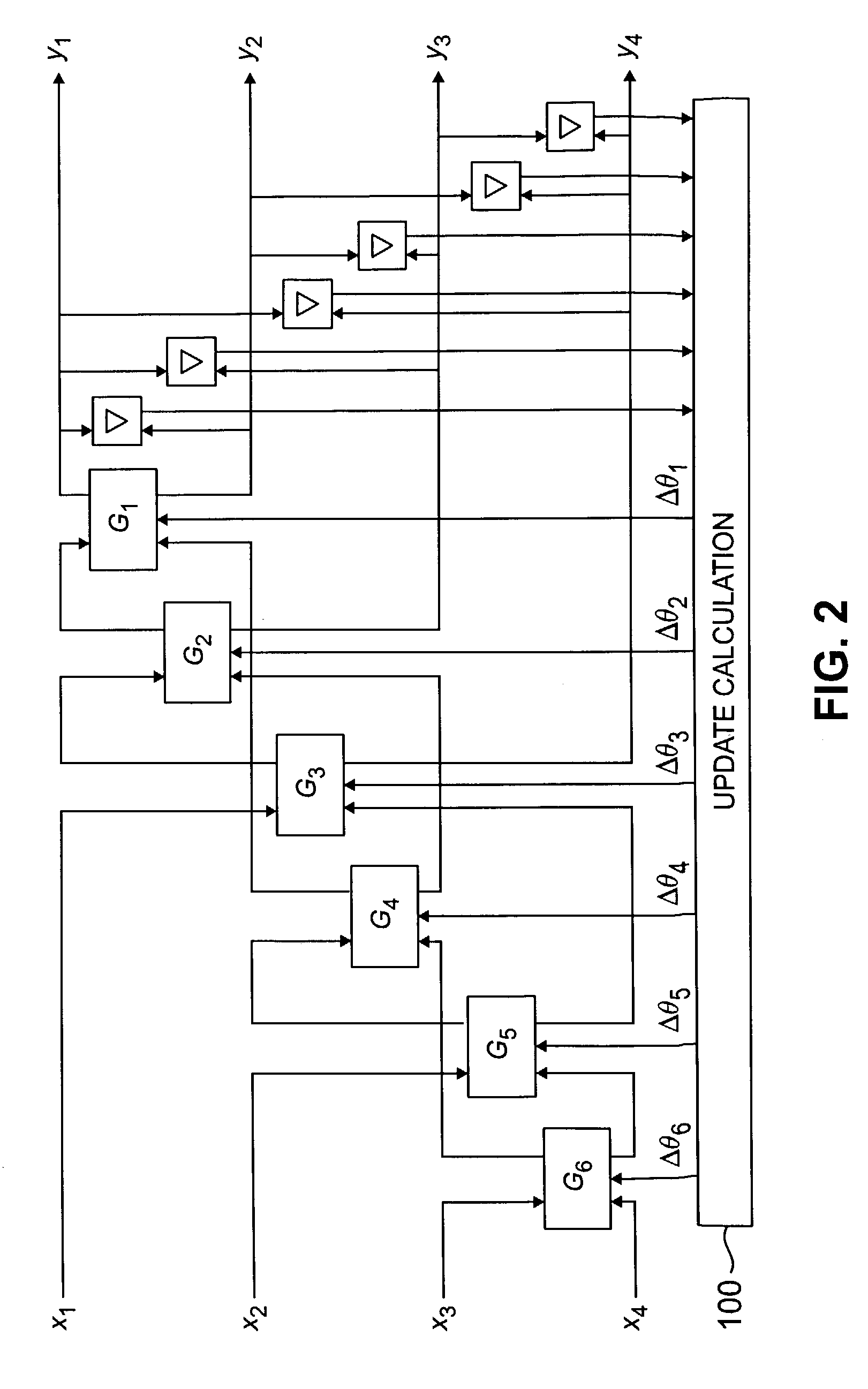Methods and apparatus for adaptive signal processing involving a Karhunen-Loève basis
a signal processing and karhunen-loève technology, applied in the field of methods and equipment, can solve the problems of inability to provide suitable convergence, step sizes approaching zero, and methods that are complicated numerically and theoretically, and achieves the effects of improving the parallelizability of computations, and improving the accuracy of computations
- Summary
- Abstract
- Description
- Claims
- Application Information
AI Technical Summary
Benefits of technology
Problems solved by technology
Method used
Image
Examples
Embodiment Construction
[0019]The invention will be illustrated below in conjunction with exemplary signal processing techniques and devices. The techniques and devices described may be applied to processing of a wide variety of different types of signals, including data signals, speech signals, audio signals, image signals, and video signals, in either compressed or uncompressed formats. The term “vector” as used herein is intended to include any grouping of coefficients or other components representative of at least a portion of a signal. The term “signal processing device” is intended to include any type of device suitable for providing at least a subset of the processing operations of the present invention, such as a digital signal processor (DSP), microprocessor, computer, application-specific integrated circuit (ASIC), filter, encoder, decoder, etc. The particular device implementation used in a given application will of course be a function of the particular requirements of that application.
[0020]As...
PUM
 Login to View More
Login to View More Abstract
Description
Claims
Application Information
 Login to View More
Login to View More - R&D
- Intellectual Property
- Life Sciences
- Materials
- Tech Scout
- Unparalleled Data Quality
- Higher Quality Content
- 60% Fewer Hallucinations
Browse by: Latest US Patents, China's latest patents, Technical Efficacy Thesaurus, Application Domain, Technology Topic, Popular Technical Reports.
© 2025 PatSnap. All rights reserved.Legal|Privacy policy|Modern Slavery Act Transparency Statement|Sitemap|About US| Contact US: help@patsnap.com



